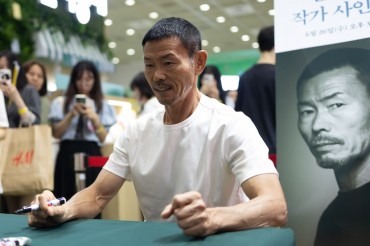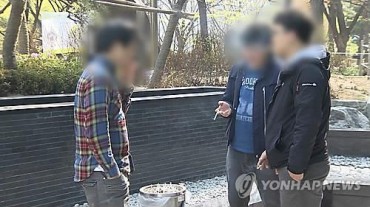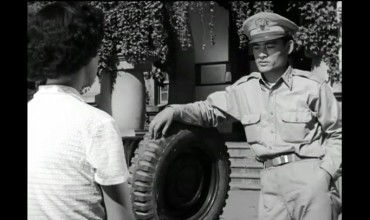
A delegation of the Jogye Order, the largest sect of Korean Buddhism, leaves the Museum of Fine Arts, Boston, on April 16, 2024 (U.S. time), carrying 14th-century Buddhist relics returned from the museum, in this photo provided by the Buddhist sect. (Image courtesy of Yonhap)
SEOUL, Apr. 17 (Korea Bizwire) — South Korean Buddhist monks reclaimed 14th-century Buddhist relics from a Boston museum in a ceremony on Tuesday (U.S. time), culminating more than a decadelong repatriation efforts by the government and the Buddhist circle.
The return was made under a landmark agreement reached in February, in which the Museum of Fine Arts, Boston, agreed to donate the remains of Buddhist monks from the 14th-century Goryeo Dynasty (918-1392) to the Jogye Order, the largest Buddhist sect of South Korea.
Believed to have been illegally taken out of Korea during the Japanese colonial period (1910-1945), the remains, called “sarira,” have been housed in the Museum of Fine Arts, Boston, one of the three most prestigious art museums in the U.S., contained in a reliquary for the past 85 years. Sarira is a Buddhist term for bead-shaped bodily relics of spiritual masters.
A delegation of the Jogye Order led by Ven. Hyegong took over the relics during a Buddhist transfer ceremony held at the MFA, Boston. The event was also attended by Kim Jae-hui, the South Korean consul general in Boston, and officials from the museum.
Retrieved along with four sets of remains — one set of the remains of the Buddha himself, alongside one and two sets of two revered Korean monks, Jigong and Naong — originally known to be the only items in the reliquary, were several fragments of relics related to two past Buddhas. Jigong and Naong are celebrated for their contributions to the history of Korean Buddhism.
“We had previously conveyed our intention to take anything that might be in the caskets, and the museum confirmed that the fragments were additionally found,” Ven. Hosan, who is also a member of the delegation, told Yonhap News Agency by phone. “It is a great achievement that we were able to take all the relics from the five caskets without fail.”

This image captured from the homepage of the Museum of Fine Arts, Boston, by the Jogye Order of Korean Buddhism shows the “silver-gilt Lamaist pagoda-shaped sarira reliquary,” dating back to the 14th century during the Goryeo Dynasty (918-1392), in its collection. (Image courtesy of Yonhap)
The delegation will return home Thursday with the relics. After another Buddhist ritual at Jogye Temple in central Seoul the following day, the sarira will then be transferred to the site of Heoam Temple in Yangju, Gyeonggi Province, where it is believed to have been originally kept, on May 19.
The repatriation came after 15 years of efforts by the Seoul government and the Buddhist circle to reclaim both the sarira and the reliquary as a set. While sarira holds great religious significance, the silver-gilt Lamaistic pagoda-shaped reliquary is considered a masterpiece of the Buddhist art of the Goryeo era.
However, negotiations that began in 2009 had been in a stalemate for years since 2013 as the museum adhered to its position that only the sarira would be returned. The museum recently became more flexible on the issue and agreed in February to push for a loan of the containers. Details of the method and the timing of the loan have yet to be announced.
The museum insists it cannot return the containers because they were legitimately purchased from a dealer in 1939 and it remains unknown exactly where they originated from.
(Yonhap)






